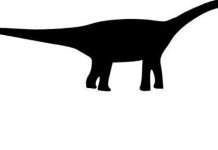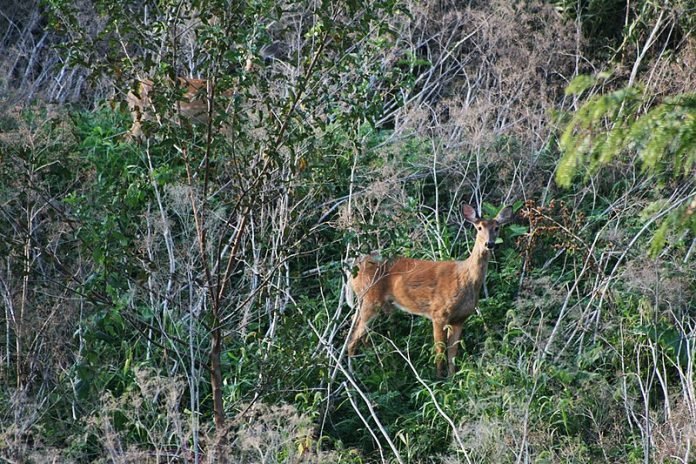Variant Creutzfeldt-Jakob disease (vCJD), first detected in 1996 in the United Kingdom, bovine spongiform encephalopathy (BSE or ‘mad cow’ disease) and Zombie deer disease or Chronic Wasting Disease (CWD) which is currently in news have one thing in common – the causative agents of the three diseases are not bacteria or viruses but ‘deformed’ proteins called ‘prions’.
Prions are highly infectious and are responsible for fatal, incurable neurodegenerative diseases among animals (BSE and CWD) and humans (vCJD).
| What is Prion? The word ‘prion’ is acronym for ‘proteinaceous infectious particle’. Prion Protein Gene (PRNP) encodes a protein called prion protein (PrP). In human, the prion protein gene PRNP is present in chromosome number 20. The normal prion protein is present on cell surface hence denoted as PrPC. The ‘proteinaceous infectious particle’ often referred to as prion is misfolded version of prion protein PrPC and is denoted as PrPSc (Sc because it is scrapie form or abnormal form related to the disease that was detected in scrapie disease in sheep). During formation of tertiary and quaternary structure, at times, there are errors and the protein get misfolded or mis-shaped. This is usually repaired and corrected to the original form catalysed by the chaperone molecules. If the misfolded protein does not get repaired, it is sent for proteolysis and is usually degraded. However, the misfolded prion protein has resistance to proteolysis and remain undegraded and transform normal prion protein PrPC to abnormal scrapie form PrPSc causing proteopathy and cellular dysfunction which gives rise to several neurological diseases in humans and animals. The scrapie pathological form (PrPSc) is structurally different from normal prion protein (PrPC). The normal prion protein has 43% alpha helices and 3% beta sheets while the abnormal scrapie form has 30% alpha helices and 43% beta sheets. The resistance of PrPSc to protease enzyme is attributed to abnormally high percentage of beta sheets. |
Chronic Wasting Disease (CWD), which is also known as Zombie deer disease is fatal neurodegenerative disease affecting cervid animals including deer, elk, reindeer, sika deer and moose. The affected animals suffer drastic muscle wasting leading to weight loss and other neurologic symptoms.
Since its discovery in late 1960s, CWD has spread to many countries in Europe (Norway, Sweden, Finland, Iceland, Estonia, Latvia, Lithuania and Poland), North America (USA and Canada) and Asia (South Korea).
There is not one single strain of CWD prion. Ten different strains are characterised to date. The strain affecting animals in Norway and North America are distinct, so is the strain affecting Finland moose. Further, novel strains are likely to emerge in future. This poses a challenge in defining and mitigating this disease in cervids.
CWD prion is highly transmissible which is a matter of concern for cervid population and human public health.
No treatments or vaccines are currently available.
Chronic Wasting Disease (CWD) is NOT detected in humans to date. There is no evidence to suggest that CWD prions can infect humans. However, animal studies suggest non-human primates that eat (or, come in contact with brain or body fluid of) CWD-infected animals are at risk.
There is a concern about possibility of spread of CWD prions to humans, most likely through consumption of meat of infected deer or elk. Therefore, it is important to keep that from entering the human food chain.
***
References:
- Centers for Disease Control and Prevention (CDC). Chronic Wasting Disease (CWD). Available at https://www.cdc.gov/prions/cwd/index.html
- Atkinson C.J. et al 2016. Prion protein scrapie and the normal cellular prion protein. Prion. 2016 Jan-Feb; 10(1): 63–82. DOI: https://doi.org/10.1080/19336896.2015.1110293
- Sun, J. L., et al 2023. Novel Prion Strain as Cause of Chronic Wasting Disease in a Moose, Finland. Emerging Infectious Diseases, 29(2), 323-332. https://doi.org/10.3201/eid2902.220882
- Otero A., et al 2022. Emergence of CWD strains. Cell Tissue Res 392, 135–148 (2023). https://doi.org/10.1007/s00441-022-03688-9
- Mathiason, C.K. Large animal models for chronic wasting disease. Cell Tissue Res 392, 21–31 (2023). https://doi.org/10.1007/s00441-022-03590-4
***




































